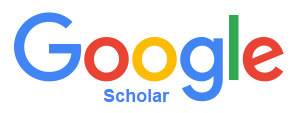The Language of the Printed Advertisement
Keywords:
printed advertisement, headline, body copy, signature, figure of speech, neologism, โฆษณาทางสื่อสิ่งพิมพ์, พาดหัวโฆษณา, ข้อความโฆษณา, ข้อความห้อยท้าย, การใช้อุปมาอุปมัย, คำศัพท์ใหม่Abstract
Advertisers are convinced that advertising “works”; as a result, they increase their marketing budgets to compete for space and time for advertisement in a variety of media, especially on television, in magazines, and on billboards (Wongbiasaj and Freeouf, 2000). Advertisements may be constructed to have several functions, e.g. to inform, to advise, to subvert, or to warn. Many advertisers seek to maximize sales of products or services by using every communication process to create need which has not yet existed (Toolan, 1988; Myers, 1994; Woods, 2006). The more customers are exposed to the advertisements, the more their perceptions, ways of thinking, values and behaviors are affected, conditioned, influenced or even manipulated by them (Wongbiasaj and Freeouf, 2000).This paper explores the linguistic features of the printed advertisement to raise the readers’ awareness of the advertisers’ techniques and, importantly, the persuasive power of advertising. The paper begins with the description of the advertisement’s structure, followed by the discussion of language features typical of the printed advertisement, and the significance of the language of printed advertising for effective communication.
In brief, this paper introduces the readers to the linguistic features of printed advertisements. It is expected that their awareness of these characteristics will help them to understand the persuasive power of advertisements and to communicate with the native English speakers effectively.
ภาษาโฆษณาทางสื่อสิ่งพิมพ์
นักโฆษณาเชื่อว่าการโฆษณานั้น “มีประสิทธิผล” ดังนั้นจึงเพิ่มงบประมาณทาง การตลาดเพื่อซื้อพื้นที่และเวลาในการโฆษณาในสื่อต่าง ๆ เช่น โทรทัศน์ นิตยสาร และป้าย โฆษณา (วงษ์เบี้ยสัจจ์ และ ฟรีอูฟ, 2000) โฆษณาตอบสนองวัตถุประสงค์ต่าง ๆ เช่น เพื่อ ให้ข้อมูล ให้คำแนะนำ ทำให้เสียความรู้สึก และให้คำเตือน แต่นักโฆษณาส่วนใหญ่พยายาม ใช้ระบบการสื่อสารทุกอย่างเพื่อกระตุ้นให้มนุษย์เกิดความต้องการขึ้นทั้ง ๆ ที่ไม่เคยมีความ ต้องการนั้นมาก่อนเพื่อที่จะเพิ่มยอดขายของสินค้าและการให้บริการต่าง ๆ (ตูลาน 1988; ไมเออรส์ 1994; วูดส์, 2006) การที่ผู้บริโภคได้มีโอกาสสัมผัสกับโฆษณามากขึ้นเท่าไหร่ พวกเขาก็มีแนวโน้มที่จะได้รับอิทธิพลจากโฆษณาทางด้านมุมมอง แนวความคิด ค่านิยม และ พฤติกรรม มากขึ้นเท่านั้น (วงษ์เบี้ยสัจจ์ และ ฟรีอูฟ, 2000) บทความนี้ศึกษาลักษณะภาษา ที่ใช้ในโฆษณาโดยเน้นโฆษณาซึ่งเป็นสิ่งพิมพ์เพื่อให้ผู้อ่านตระหนักถึงเทคนิคของนักโฆษณา และที่สำคัญคือพลังในการจูงใจของโฆษณา บทความนี้เริ่มต้นด้วยการอธิบายโครงสร้างของโฆษณาโดยทั่วไปและลักษณะภาษาโฆษณาที่สำคัญ นอกจากนี้ยังกล่าวถึงความสำคัญของ ภาษาโฆษณาที่มีต่อประสิทธิภาพในการสื่อสาร
Downloads
How to Cite
Issue
Section
License
บทความนี้ได้รับการตีพิมพ์เป็นของวารสารวิชาการคณะมนุษยศาสตร์และสังคมศาสตร์ คณะมนุษยศาสตร์และสังคมศาสตร์ มหาวิทยาลัยสงขลานครินทร์ วิทยาเขตปัตตานี





